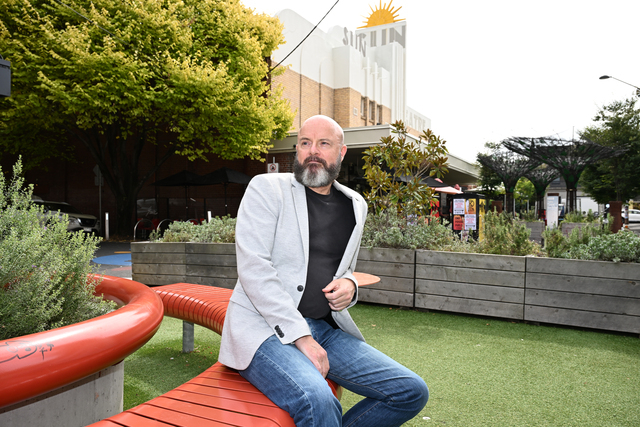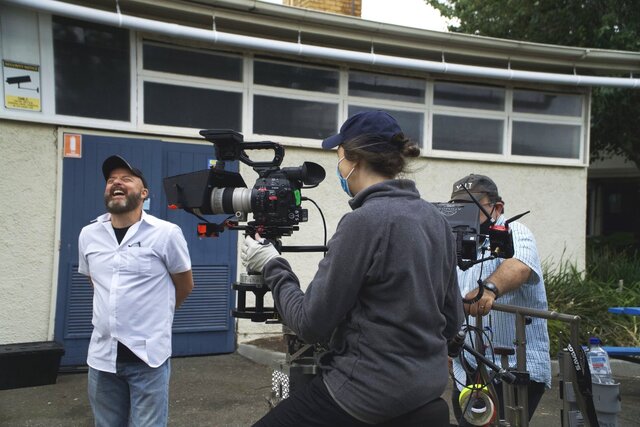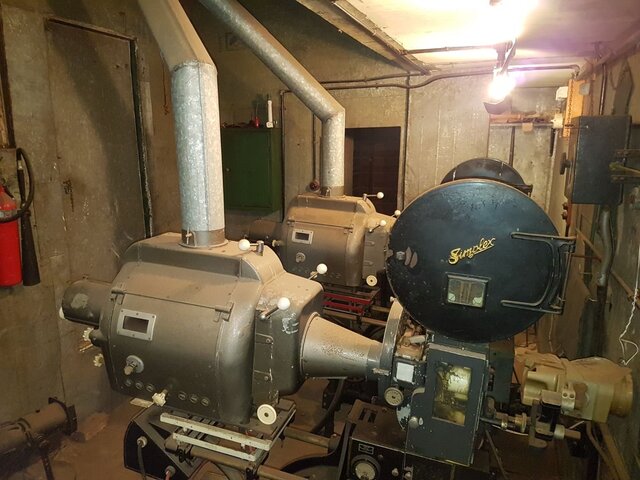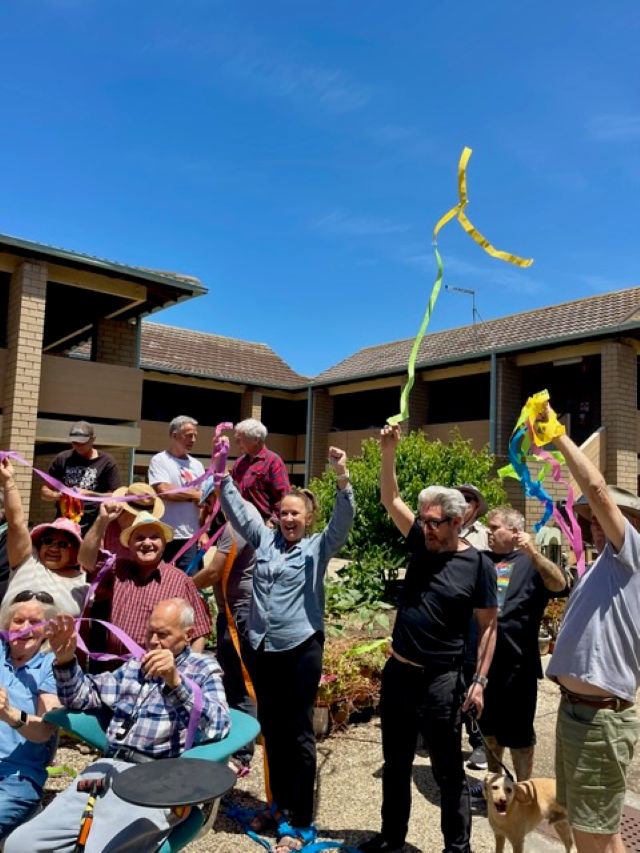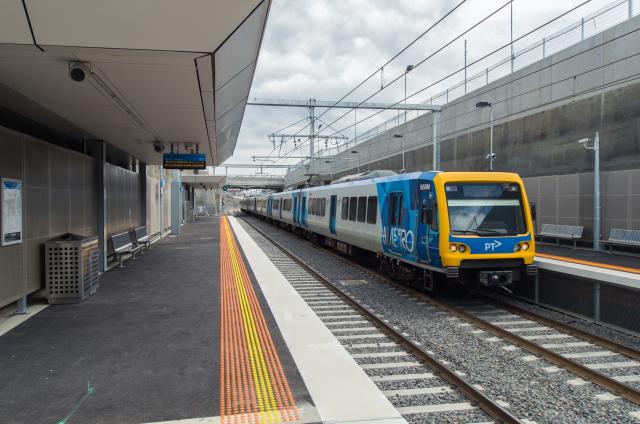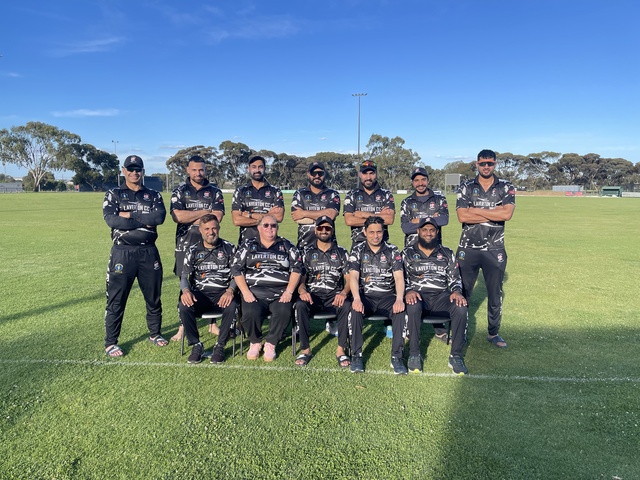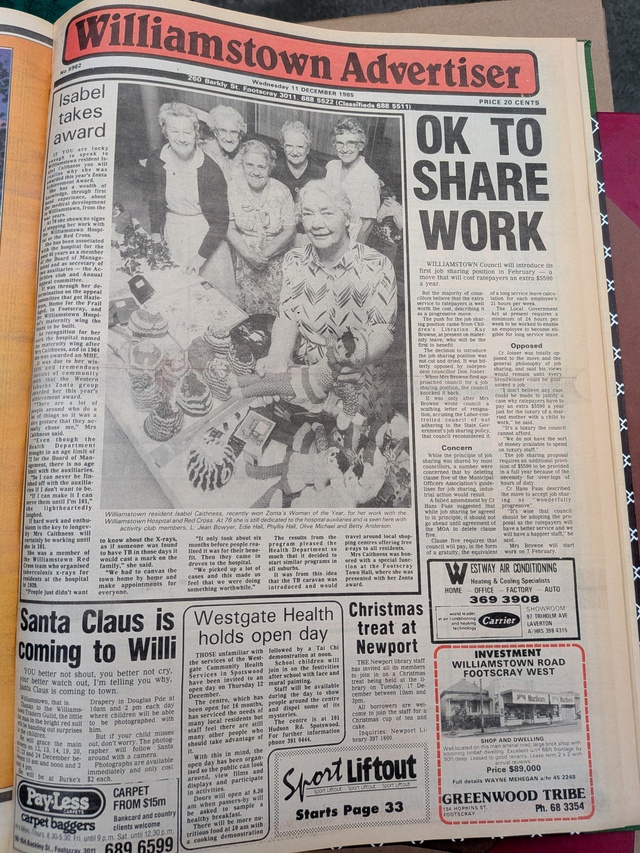Kingsville filmmaker and projectionist Bert Murphy’s career has come full circle, or in keeping with the theme, full reel as Cade Lucas reports.
It was Murphy’s love of going to the cinema and watching movies that first got him into being a projectionist and then a filmmaker.
And it was that love of film and film projectors that eventually led him to making a feature length documentary, one that finally saw him projected onto screens rather than being the one doing the projecting or sitting in the cinema watching.
That documentary is Splice Here: A Projected Odyssey, originally released in 2022, but which is now streaming on SBS On Demand where it will remain for the rest of the year.
Part biography, part cinematic and cultural history and partly a tale of how one of the world’s most famous directors and his newly released blockbuster were lured to an independent Yarraville movie theatre, Splice Here is centred on the movie business’s early 2010’s transition from film to digital.
“I guess, in a nutshell, it’s about the survival of the projected film experience,” said Murphy who as a projectionist – the person in bowels of the theatre operating the arcane machinery that transports a movie from a film reel to a cinema screen – had both a vested interested in and a ringside seat to, the most consequential change in motion picture history.
“It really covers the 10 years of the transition from protecting film to digital, so it goes into all of the arguments that occurred at the time, and still carry on, about what’s the difference, why is it better or why is it worse and why should we hang on to it?”
Such arguments are hardly unique to cinema. From music to photography to television and even journalism, the 21st Century has brought about a change from analogue to digital formats and the array of pros and cons that come with it.
But with film, this change is much more definitive.
Given the size, expense and complexity of analogue film making and projecting equipment, the scarcity of theatres able to accommodate them, and the fragility of the film reels themselves, the move to digital has meant vast swathes of movie making history, quite literally, being thrown in the bin.
And while most movie goers were unaware this fundamental change was occurring, for a film nerd like Murphy, it was a moment in time that just had to be captured.
“When the transition to digital started, I kind of felt like I just wanted to document what we’re about to lose.”
At the time Murphy was working as a projectionist and filmmaker at Yarraville’s Sun Theatre, a role he still has today and which proved pivotal in allowing him to make the documentary.
The owner of the Sun Theatre, Michael Smith, would eventually become executive producer of Splice Here and remembers working alongside Murphy when he first had the idea.
“My memory of it is that the project came about organically because when we started removing film projects – I have another business installing projectors – and all of a sudden we found ourselves going around removing machines in some cases been around for 50 years to replace them with electronic projectors that we knew wouldn’t last as long,” recalled Smith.
“Bert, as an inquisitive filmmaker, thought that this was a momentous time in film history and it needed to be recorded.”
With assistance from producer and cinematographer, Joanne Donohoe-Beckwith, Murphy set about doing just that while weaving in his own story and a potted history of Australian cinema, as well.
The film begins by retracing Murphy’s own path into film making and projecting, from a Star Wars obsessed teenager living on Melbourne’s outskirts in the late 70’s, to later becoming a regular at grand old Melbourne theatre houses such as the Valhalla in Richmond and the Astor in St Kilda, in the 1980’s and into the industry proper in the 1990’s
Murphy then ventures back further still to the halcyon days of the 1940’s and 50’s and venues like the Regent Theatre on Collins Street, which was the only Australian theatre equipped with cutting-edge ‘Cinerama’ technology that used 35mm projectors to project images onto a deeply curved screen, turning movie going into a theatrical event.
He also travels around Australia and overseas to interview fellow projectionists and film industry luminaries such as director Douglas Trumbull and reviewer Leonard Maltin.
And of course there’s footage of Murphy and his fellow projectionists on the job, performing the precise, labour intensive and complex work of projecting a film onto a screen.
But according to Smith, the crucial point in the development of the documentary and the story it tells came in 2016, courtesy of one of the world’s most famous directors.
“The turning point is Quentin Tarantino deciding that film need to be saved at all cost and the Hateful Eight came along and turned everything round again.”
A western thriller starring Samuel L Jackson and Kurt Russell, the Hateful Eight was Tarantino’s ninth movie and in keeping with the director’s enigmatic, Hollywood history buff reputation, he decided a longer version shot on 70mm film would be subject to a limited, roadshow release in select theatres worldwide.
Murphy was determined for the Sun Theatre to be one of them and the latter half of the documentary follows his quest to find and install a 70mm projector in order to secure a screening and, hopefully, an appearance from Tarantino himself.
As the documentary shows, he also had to overcome Smith’s pessimism.
“I was enthusiastic, but we were doing it not even knowing if we would get a print, so we proceeded cautiously,” said Smith, who was also preparing for a solo flight around the world at this point, also the subject of a documentary.
Fortunately, Smith returned from his round the world flight to good news; they’d secured a 70mm projector and a screening.
The Hateful Eight screened at the Sun Theatre in January 2016, with Samuel L Jackson and Quentin Tarantino making the trip as well.
“Oh my goodness, did it work out,” declared Smith almost a decade on.
“It put us on the map.”
After the screening, Tarantino made his way up to the ‘box’, the booth where Murphy had been at work on the 70mm projector, putting the Hateful Eight on screen.
“He came up and said hello afterwards and I had 15 minutes alone to chat with him, which was lovely,” said Murphy of his conversation with Tarantino, some of which was filmed for the documentary which the man himself showed great interest in.
“He said, ‘the documentary sounds fantastic and if you can get over to LA, you know, I’ll give you an interview,’ recalled Murphy.
“And of course, that didn’t happen because of COVID-19 and so forth.”
Even getting Tarantino to sign a release form allowing his image to be used at all, proved difficult, until a chance encounter that reads like a movie script.
“I tried for years, and I could not get to him (Tarantino) and then, quite by chance, I was in LA, and I got into an Uber, and the guy who was driving said ’I used to work for WME’ which is Tarantino’s agency. And he said, ‘ I can get this for you.’ And he did!”
It sounds like scene out of another of Tarantino’s movie’s : Once Upon a Time in Hollywood.
Splice Here: A Projected Odyssey is streaming now at: https://www.sbs.com.au/ondemand/

